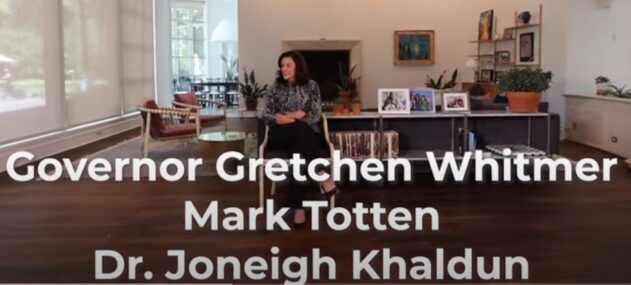Pontiac, Michigan – Main Street Oakland County is partnering with Main Street America to offer a free strategic recovery plan workshop for downtowns and historic commercial corridors that have been hardest hit by the coronavirus pandemic.
The virtual workshop, entitled “Main Street Forward: Planning for Recovery,” is October 6 from 9:30-11 a.m. and features Matt Wagner Ph.D., vice president of revitalization programs for the National Main Street Center in Chicago.
“We know that our small businesses and downtowns have been hit particularly hard during the pandemic, and this workshop will offer strategic and informed recovery plans,” Oakland County Executive David Coulter said. “Main Street Oakland County is working closely with Main Street America to offer one of the few workshops of its kind in the country that is taking an in-depth look on recovery planning with its downtowns and offering a pathway to revitalization.”
The session is geared for planners, Main Street Oakland County board members, city council members, local economic development officials, local downtown organization staff, local Main Street committee members and city managers. Registration is free and available at https://zoom.us/webinar/register/WN_hP1z7kacQpebBrIydjSSuQ. After registering, you will receive a confirmation email containing information about joining the webinar.
“Downtowns and urban commercial districts across the United States won’t simply recover from a global pandemic as a result of government proclamations to reopen,” the workshop description states. “Nor will only ‘reopen marketing’ bring customers back downtown. A return to brick-n-mortar shopping, getting a haircut, participating in a fitness class, eating in a restaurant or attending a special event will all greatly depend upon having an informed and strategic recovery plan. Your recovery work plan will position your organization with a road map, a leadership position in the recovery and an opportunity to secure implementation resources through advocacy.”
Wagner is responsible for driving Main Street America’s field service initiatives including the development and delivery of technical services for Main Street America and Urban Main programs, directing the new research agenda, as well as professional development programming through the Main Street America Institute.
Prior to his work at the National Main Street Center, Wagner had a dual role of director, Global Community Affairs, and president of Johnson Redevelopment Corporation at SC Johnson, a $10 billion global consumer products company.
Questions about the workshop can be sent to Main Street Oakland County coordinator John Bry at bryj@oakgov.com.
In 2019, public and private investment in Main Street Oakland County totaled more than $50.2 million and resulted in 450 net new jobs; 60 net new businesses; and contributions of more than 28,460 volunteer hours. To date, more than $837 million in public and private investments have been made to Main Street downtowns, establishing 1,163 new businesses and generating 8,000 jobs.
Oakland County is the first and still only county in the United States to operate a full-service, county-wide Main Street program.
Main Street Oakland County designated communities are: Auburn Hills, Berkley, Birmingham, Clarkston, Clawson, Farmington, Ferndale, Franklin, Groveland Township, Hazel Park, Highland Township, Holly, Holly Township, Lake Orion, Lathrup Village, Leonard, Madison Heights, Oak Park, Ortonville, Oxford, Pontiac, Rochester, Royal Oak, South Lyon and Wixom.









